This experience is another gem that comes from Ann Pelo, author of The Language of Art: Inquiry Based Studio Practices in Early Childhood Settings.
Here is what Ann has to say about still-life portraits:
“In creating still-life portraits, children form an intimate relationship with their subject. They spend time looking closely, aligning themselves with the subject of their work. Then they translate their understanding of the subject to paper, first sketching with black pen and then adding colour.”
In my classroom, I refer to still-life portrait experiences such as these as “dainty painting.” ‘Dainty’ refers to the fact that the children use fine tipped markers and fine brushes to create their artwork. I have never understood why Kindergarten children are always given large, fat brushes to paint with. Large brushes are incredibly difficult to manipulate with small hands, hold more paint than is often needed, and are not useful for adding small details. In the pictures below, you’ll notice that we use only the smallest of brushes for this activity. If the goal is for the children to notice the finest of details in their subject, we need to give them the proper tools for them to recreate what they see.
Before painting, the teacher spends time with the children looking closely at the gourds. The children are encouraged to talk about what they notice about each gourd’s size, texture, shape, and colour. Interesting markings or designs are also noted. When the children have had time to get acquainted with their subject, they are given fine black markers to sketch what they see. At this point the teacher may offer suggestions on how the children can add more details to their work. Finally, the children use watercolour paints to add colour to their sketches.
J: I got a beautiful gourd. I notice it’s green on the bottom and yellow on top. It is a beautiful gourd. It has lots of bumps on it too.
E: I made lots of bumps because it is bumpy. My gourd is orange and yellow. It looks like a pear. The stem is green – actually, it’s a really dark green.
G: There are lines on the pumpkin so I drew them. The lines help me keep my painting neat.
W: This one is hard because it has two colours. I can’t make it the right colour. When I added more green it turned the yellow green too and I can’t fix it.
Y: It’s a fluffy one. It’s green, yellow, and orange. It has so many bumps. It looks like a melon.
K: The stem is kinda wiggly!
Dainty painting is an art experience that we revisit often throughout the year. Over time, the children become expert at using their senses, describing what they notice, and using their art skills to recreate what they see on the page.

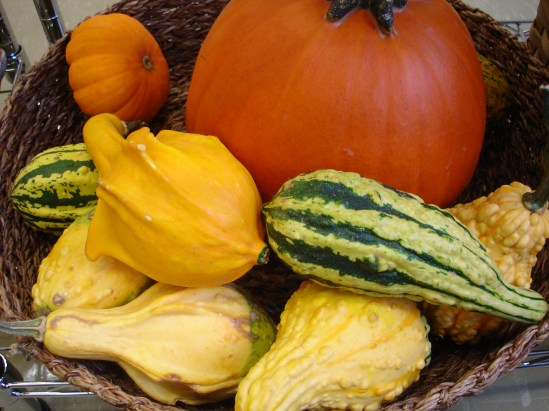
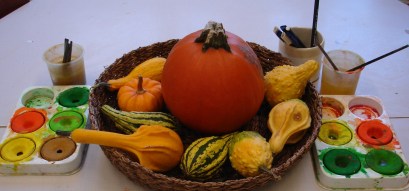
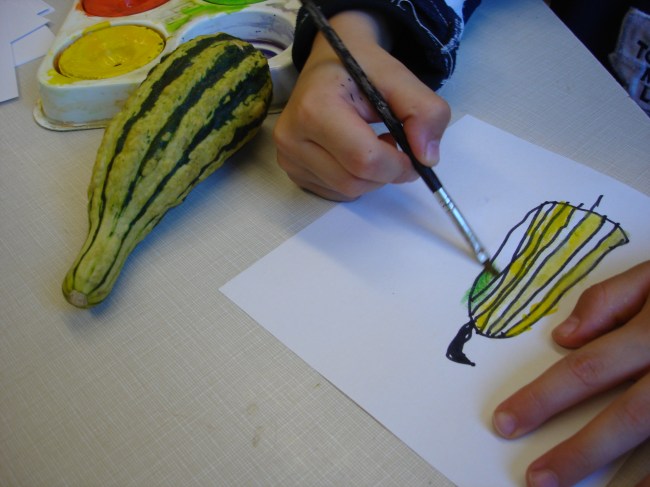
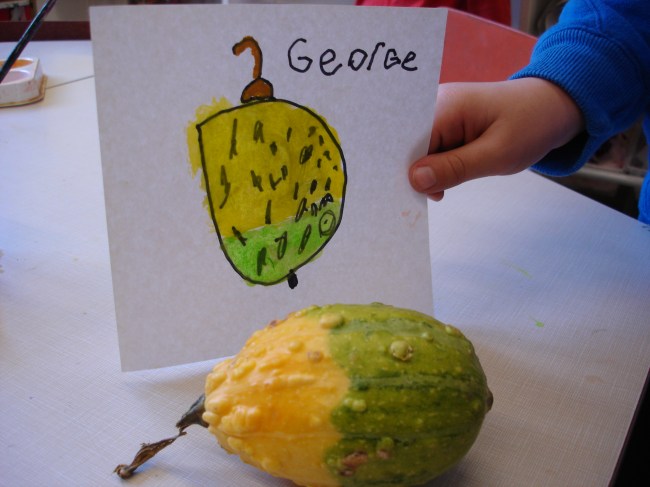
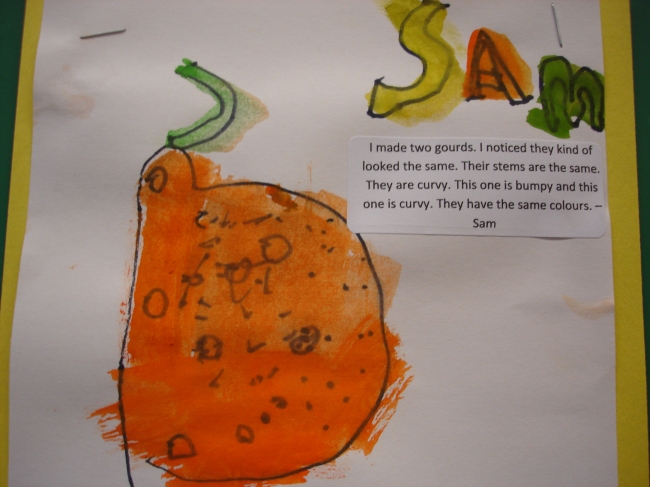
Pingback: Art Studio Inspiration: Drawing Projects for Children | The Curious Kindergarten